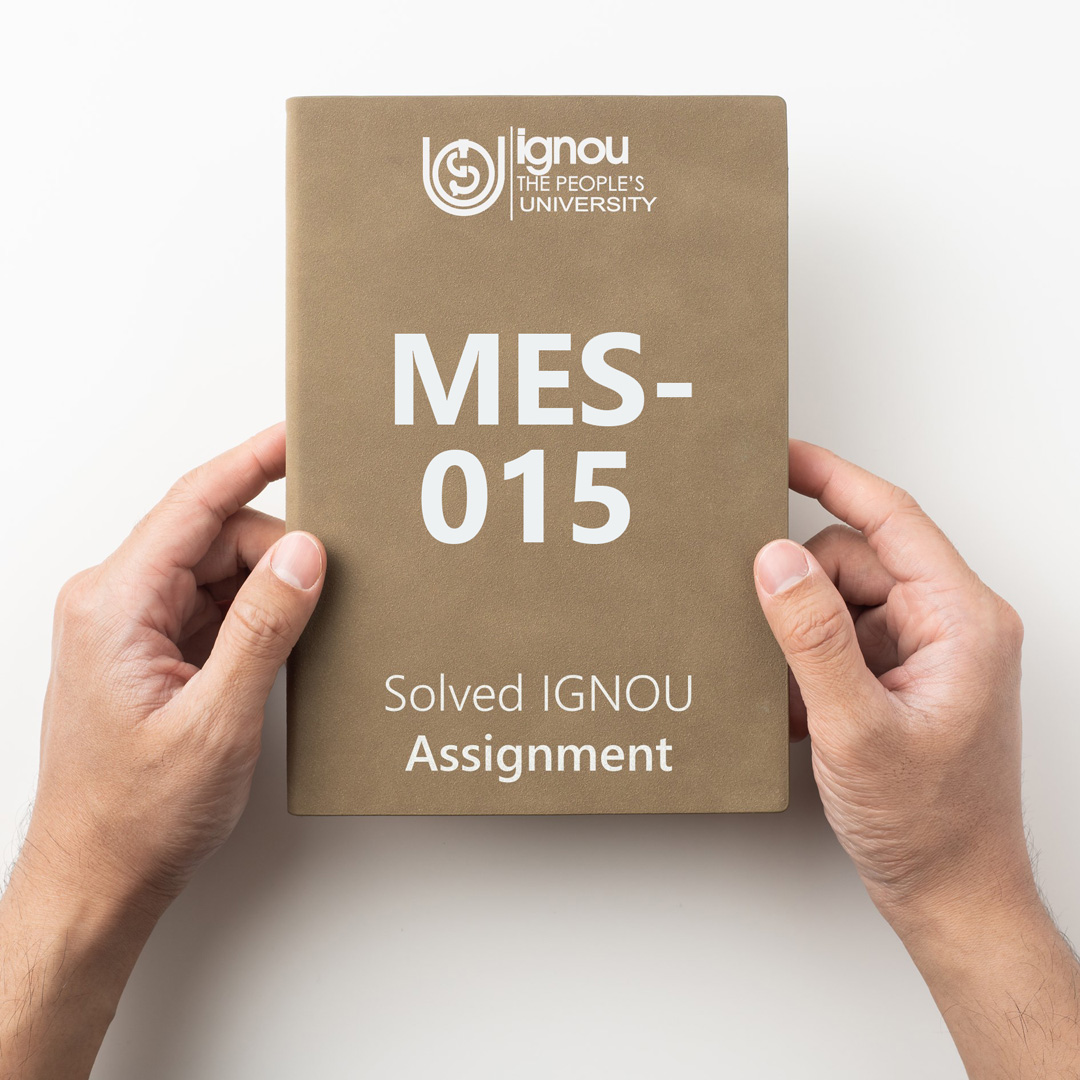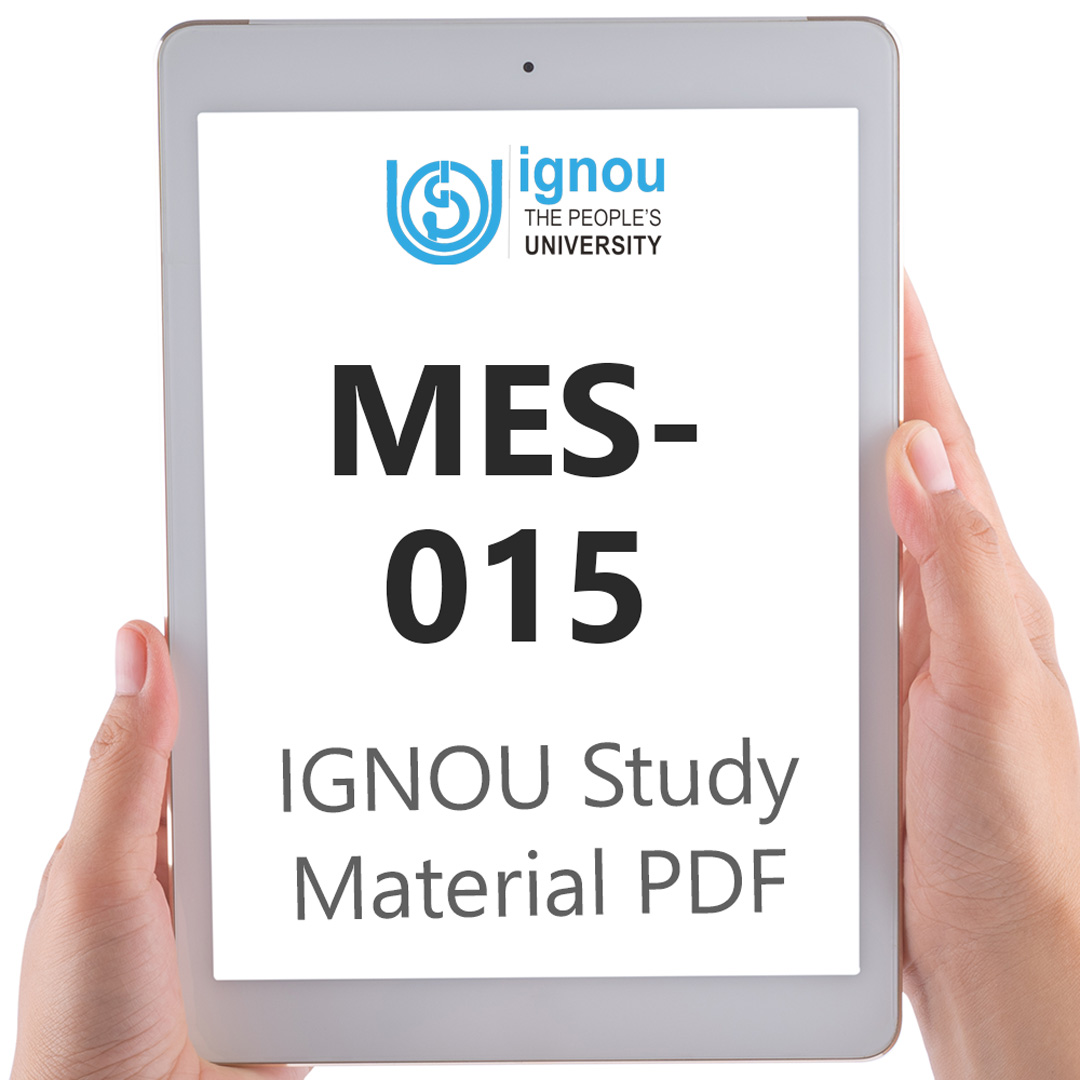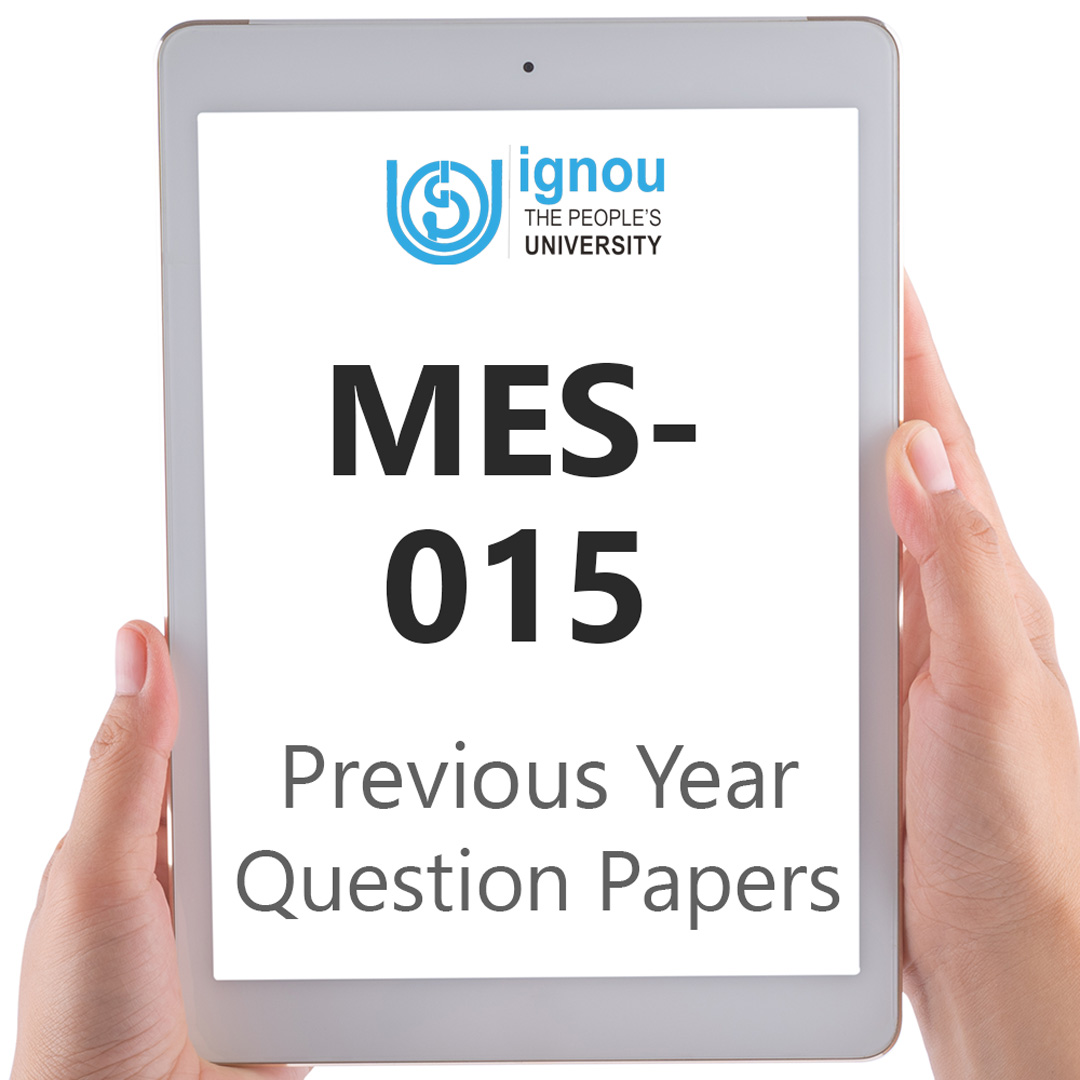If you are looking for MES-015 IGNOU Solved Assignment solution for the subject Operational Dimensions of Education, you have come to the right place. MES-015 solution on this page applies to 2023 session students studying in MAEDU courses of IGNOU.
MES-015 Solved Assignment Solution by Gyaniversity
Assignment Code: MES-015/TMA/2023
Course Code: MES-015
Assignment Name: Operational Dimensions of Education
Year: 2023
Verification Status: Verified by Professor
a) Explain the meaning and goals of Education for All (EFA). Discuss the role of Sarva Shiksha Abhiyan (SSA) in achieving the goals of EFA. (500 words)
Ans) Education for All (EFA) is a global effort that was initiated in 1990 by the United Nations Educational, Scientific and Cultural Organization (UNESCO) with the goal of providing fundamental education to all children, youth, and adults around the world. The goal of the programme is to make high-quality education available to all people, irrespective of factors such as socioeconomic standing, gender, or geographical location.
The EFA project is predicated on achieving the following six primary goals:
Expand early childhood care and education.
Provide free and compulsory primary education for all.
Promote learning and life skills for young people and adults.
Increase adult literacy by 50%.
Achieve gender parity and equality.
Improve the quality of education.
Education is recognised as a vital human right and a key motivator for social and economic development thanks to the Education for All programme (EFA). Education enables people to acquire the knowledge and skills necessary to improve their quality of life, and it also contributes to the overall growth and development of communities. Increasing access to high-quality education can help alleviate poverty, boost employment possibilities, advance gender equality, and bolster efforts to develop in a sustainable manner.
The Sarva Shiksha Abhiyan (SSA) is the flagship education initiative of the Indian government. Its primary objective is to ensure that all children in India between the ages of 6 and 14 receive an education that is both free and mandatory. The programme was initiated in the year 2001 as a reaction to the imperative to meet the objectives of Education for All (EFA), which is an international movement that aims to give all children in the world access to a basic education of sufficient quality.
The SSA program plays a crucial role in achieving the goals of EFA in India. Some of the ways in which SSA contributes to the achievement of EFA are as follows:
Universal Access to Education: The SSA program aims to provide universal access to education by ensuring that all children between the ages of 6 and 14 have access to quality education. The program has helped to increase enrolment rates, particularly among girls and disadvantaged groups, which is essential to achieving the EFA goal of providing education for all.
Equity in Education: The SSA program has a specific focus on providing education to disadvantaged groups, including girls, children from scheduled castes and tribes, and children with disabilities. By prioritizing these groups, the program helps to reduce the disparities in access to education and achieve the EFA goal of promoting equity in education.
Quality of Education: The SSA program has a strong focus on improving the quality of education provided to children. This is achieved through the provision of teacher training, the development of high-quality teaching materials, and the use of technology in education. By improving the quality of education, the program helps to achieve the EFA goal of providing quality basic education.
Lifelong Learning: The SSA program recognizes the importance of lifelong learning and aims to provide education that is relevant and useful to children throughout their lives. The program has a strong focus on vocational education and skills development, which is important in achieving the EFA goal of promoting lifelong learning.
b) Describe how resources are managed at central, state and community levels. (500 words)
Ans) In India, where there are various languages, religions, cultures, and social and economic groupings, powerful and solid instruments are needed to adapt to changes. Democracy requires such equipment. With so many kids in school and so much money spent on education, resource management systems at all levels are essential.
Resource Management at the Central Level
The Union Ministry of Human Resource Development oversees national education (MHRD). Ministers of State support the MHRD's cabinet minister. The MHRD has several advisory groups, including the Central Advisory Board of Education (CABE), the University Grants Commission (UGC), the All India Council for Technical Education (AICTE), the National Council for Teacher Education (NCTE), and NCERT. These advise the government on education sectors.
In addition to this machinery, the National University of Educational Planning and Administration (NUEPA), Rehabilitation Council of India (RCI), and Distance Education Council (DEC) assist the Union Ministry of HRD on national educational planning and resource management. The national Ministry of HRD and its constituent entities, along with their state counterparts, create and execute educational policy. Education policy is set by the central Planning Commission and state planning bodies. The Planning Commission provides broad recommendations for national and state governments to write Five Year Plans and Annual Plans. The Union Cabinet and NDC then approve these plans for implementation. The Ministry of HRD and its central departments advise state and union territory education administrations. They also track programme progress. The Centre publishes educational statistics.
Resource Management at the State Level
State education departments administer educational resources. State Education Ministers run the Education Department. Governments and departments oversee medical, agricultural, technical, and legal implementation education. State education departments regulate three things. commanding. The Department's Secretariat, Directorate, and Inspectorate do these. The Secretariat develops and implements policy, while the Directorate manages. Inspectorate oversees Directorate.
The Secretariat makes all education policies. Secretary-Education Directorate cooperation. A joint Secretary and many deputy Secretaries may assist the Secretary. The Secretary issues all government education orders. The Education Directorate implements government policy. The government receives education updates. Director of Education oversees college and school education directors. Policy advice comes from the Director of Education. He oversees state education. Districts divide states.
Districts, blocks, "talukas," and so on are used to simplify divisions. Local technology manages educational resources in numerous states. Thus, state machinery that transfers resources to local organisations handles resources well. It supports education. The Center mandates attendance, disabled, and women's education regulations. Its supervisory apparatus monitors state-wide institutions. It hires, pays, and conditions instructors. It determines textbooks. Some states manufacture and distribute textbooks. State resource management manages resources well.
Resource Management at the Community Level
India's central and state governments do not oversee education alone. Private and voluntary organisations have long been involved in this area. Christian Missions, Arya Samaj, Muslim Wakfs, Ramakrishna Mission, and Vivekananda Mission. Societies registered under the Societies Registration Act of 1860 or the Bombay Public Trust Act of 1950 also administer organisations. Many institutions are run by business owners. Nearly 30% of the nation's schools are privately run. Kerala has 61.6 such institutes, Bihar 74, and Orissa 65.5. Thus, voluntary agencies help enhance education in India. They oversee engineering and teacher training institutions as well as primary, secondary, higher secondary, and degree colleges, some with state grants-in-aid and others without.
Many private colleges get grants-in-aid from the government and are regulated by the state Department of Education. Many institutions are self-funded. These organisations charge exorbitant fees. Only the wealthy can afford private schools like Indian Public Schools. However, private schools are criticised. Many say they reinforce class distinction. Only the rich can afford such schools, while the poor send their children to government-run schools with inferior education. They say that closing high-profile institutions will force the privileged to send their children to government schools. They would become more interested in such schools because of their children's education. Thus, government school education would continuously improve.
c) Identify a topic of your choice at the secondary level. Prepare ten frames of Programmed Learning Materials (PLM) following linear style. Describe the steps you would follow while preparing these frames. (500 words)
Ans) Topic: Solving Quadratic Equations by Factoring
Ten Frames of Programmed Learning Materials (PLM)
1) Frame I: Introduction
a) Introduce the topic of solving quadratic equations by factoring.
b) Define quadratic equations and explain what it means to "solve" an equation.
c) Provide examples of quadratic equations.
2) Frame II: Basic Concept of Factoring
a) Explain what it means to factor a polynomial.
b) Provide examples of factoring polynomials.
c) Show how to factor a quadratic polynomial in the form of ax2 + bx + c.
3) Frame III: Factoring Trinomials
a) Explain what a trinomial is and why it is important in factoring quadratic equations.
b) Provide examples of factoring trinomials with a leading coefficient of 1.
c) Show how to factor trinomials with a leading coefficient other than 1.
4) Frame IV: Factoring by Grouping
a) Explain the concept of factoring by grouping.
b) Provide examples of factoring quadratic equations using the grouping method.
5) Frame V: Solving Quadratic Equations by Factoring: Method
a) Introduce the first method of solving quadratic equations by factoring.
b) Provide examples of quadratic equations that can be solved using this method.
c) Show how to solve a quadratic equation by factoring using this method.
6) Frame VI: Solving Quadratic Equations by Factoring: Method 2
a) Introduce the second method of solving quadratic equations by factoring.
b) Provide examples of quadratic equations that can be solved using this method.
c) Show how to solve a quadratic equation by factoring using this method
7) Frame VII: Applications of Quadratic Equation
a) Explain the importance of quadratic equations in real-life situations.
b) Provide examples of applications of quadratic equations in fields such as physics, engineering, and finance.
8) Frame VIII: Common Mistakes to Avoid
a) Identify common mistakes students make when solving quadratic equations by factoring.
b) Provide examples of each mistake and explain how to avoid them.
9) Frame IX: Practice Problems
a) Provide practice problems for students to solve.
b) Include problems that require both methods of solving quadratic equations by factoring.
10) Frame X: Conclusion
a) Summarize the key concepts covered in the PLM.
b) Provide resources for additional practice and review, such as worksheets and online quizzes.
Steps to Follow while Preparing Frames
Determine the Learning Objectives: Identify the learning objectives you want your PLM to achieve. For example, in this case, the objective could be to help students understand how to solve quadratic equations by factoring.
Identify the Target Audience: Consider the age, academic level, and prior knowledge of the audience you are targeting. This information will help you design the PLM in a way that is appropriate for the audience.
Organize the Content: Divide the content into logical sections and sub-sections. This helps to ensure that the PLM is well-structured and easy to follow.
Write the Content: Write the content for each frame, ensuring that it is clear, concise, and easy to understand. Use examples and diagrams to help explain complex concepts.
Design the Frames: Design each frame of the PLM, ensuring that it is visually appealing and easy to read. Use graphics, colours, and fonts that are appropriate for the target audience.
Review and Edit: Review the PLM for accuracy, clarity, and relevance. Edit the content to eliminate any errors, inconsistencies, or unnecessary information.
Test the PLM: Test the PLM with a sample audience to ensure that it is effective and achieves the learning objectives.
Revise and Update: Revise and update the PLM as needed based on feedback from the test audience.






